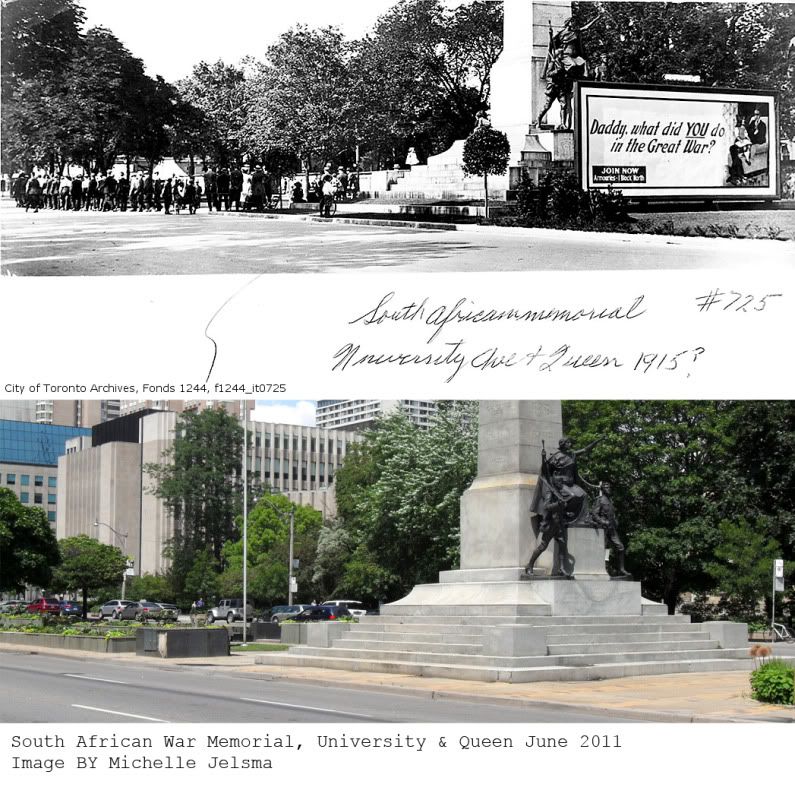



Sorry that I have been away, I have been enjoying the summer to its full extend. I wanted to make sure that I got another entry in before heading off to the cottage for the long weekend. Today I look at the intersection of University Ave and Queen Street West. This street got its name since it was the main route to the university at the north end of the city. The road for many years was very green and had an island with trees in the centre dividing the north and southbound lanes. This has been preserved with the islands which are still present today. Many have monuments to specific events and people who were important during their time of creation.
I really liked the images I found this week because they were set either during the First World War or right afterward. There are tanks, planes and cute military men in uniform. My good friend Alison came along with me to help photograph the various position the other day.
I am sort of chagrined to admit that I have passed the monument at Queen and University so many times and didn’t really know it’s name or what it stood for. It’s the one with the angel and I figured it was for one of the world wars. WRONG. This is the South African War Memorial (also known as the Second Boer War) which was built in 1908. It became a rallying point for the other wars to follow it seems. I think that my favorite image is the one asking “Daddy, what did YOU do in the Great War?” talk about a guilt trip.




